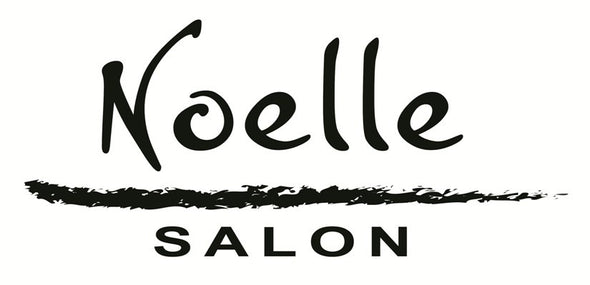Hair Topper & Hair Loss Insurance: Essential Coverage Guide

Insurance Coverage for Hair Toppers & Loss Systems

Key Highlights
Insurance coverage is available for hair toppers, mesh integration hair loss systems, and cranial prostheses, such as medical wigs, for individuals experiencing hair loss due to medical conditions.
Health insurance plans cover the cost of a cranial prosthesis, including human hair wigs, synthetic wigs, and other hair systems.
- The coverage amount varies by insurance provider, with some covering up to 80-100% of the cost for a full cranial prosthesis.
- It is important to check with your insurance plan to determine if your specific medical condition qualifies for coverage and what documentation is required for an insurance claim.
If your insurance plan does not cover hair loss solutions, there may be alternative options available, such as financial assistance from local resources or organizations like the National Alopecia Areata Foundation.
- In case of claim denial, it is possible to appeal the decision by following the insurance company's appeal process.

Introduction
Welcome to our comprehensive guide on insurance coverage for hair toppers and loss systems. Losing hair can be a challenging experience, but finding the right solutions shouldn't be. In this blog, we will explore the world of insurance coverage for hair loss solutions, specifically focusing on hair toppers and cranial prostheses, such as medical wigs and hair extensions.
At Noelle Salon, it is our goal to assist you in receiving insurance coverage for your hair piece. We will help with providing invoices and paid receipts. Since we are not a medical facility, we can not file the claim for you and you may need a prescription from your health care provider. We find that many insurance companies provide partial, and full compensation for a cranial prosthetic, and most receive coverage for one hair topper, wig, or integration per year. Our client with trichotillomania also receives coverage with an alopecia diagnosis.
Hair loss can occur due to various medical conditions, including alopecia areata, trichotillomania, lichen planopilaris, chemotherapy, radiation, and other clinical diseases. These conditions can have a significant impact on an individual's self-esteem and emotional well-being. Fortunately, many health insurance plans offer coverage for hair loss solutions, providing financial assistance to individuals seeking hair toppers or cranial prostheses.
Understanding your insurance coverage is crucial to navigating the process of obtaining the necessary solutions for your hair loss. From determining if your insurance plan covers the cost to preparing and submitting an insurance claim, we will guide you through each step of the process. We will also address common questions and concerns related to insurance coverage for hair loss solutions.
Whether you are considering a hair topper, wig purchase, or full cranial prosthesis, this guide will provide you with the information you need to navigate the insurance process and ensure you receive the coverage you deserve. Let's dive in and explore the world of insurance coverage for hair toppers and loss systems for medical purposes, specifically medical wig insurance claims.
Understanding Insurance Coverage for Hair Loss Solutions
When it comes to hair loss solutions, understanding your health insurance coverage is essential. Health insurance plans typically cover medical expenses related to a wide range of conditions, and hair loss is no exception. If you are experiencing medical hair loss due to a condition such as alopecia areata, chemotherapy, radiation, thyroid issues, kidney problems, or cancer treatment, your health insurance may offer coverage for a cranial prosthesis, which includes options like medical hair loss wigs and hair toppers.
However, it's important to note that not all health insurance plans provide coverage for hair loss solutions. The availability of coverage may vary depending on your specific insurance provider and policy. Therefore, it is crucial to review your insurance plan and contact your health insurance provider to determine if your hair loss condition qualifies for coverage. In some cases, coverage is limited to a cancer diagnosis.
The Basics of Cranial Prosthesis Coverage
A cranial prosthesis is a custom hair system designed for individuals experiencing hair loss due to medical conditions. It is important to understand the basics of cranial prosthesis coverage when navigating the insurance process. Each insurance provider may have different guidelines and requirements for coverage.
Some insurance providers offer coverage for cranial prostheses as part of their medical equipment benefits. This coverage may include options for both synthetic and human hair wigs. The extent of coverage can vary, with some insurance companies covering up to 80-100% of the cost for a full cranial prosthesis. It is advisable to contact your insurance provider or insurance broker directly to inquire about the specific coverage details for cranial prosthesis and the necessary documentation for an insurance claim. Additionally, organizations such as the American Cancer Society and the National Alopecia Areata Foundation (NAAF) offer various programs to assist cancer and alopecia patients, including financial assistance for medical wigs. The American Cancer Society is willing to grant up to $75 for a medical wig for the benefit of cancer patients, and in some cases, the cost of a cranial prosthesis may also be tax deductible. Understanding the basics of cranial prosthesis coverage and the resources available, such as the American Cancer Society, can greatly help individuals in need of a cranial prosthesis.
Differentiating Between Hair Toppers, Wigs, and Integration Systems
When exploring hair loss solutions, it is important to understand the differences between various options, including hair toppers, wigs, and integration systems. Each option offers unique features and benefits tailored to individual preferences. Here's a breakdown of the key differences:
- Hair Toppers: Hair toppers are designed to cover specific areas of hair loss, providing additional volume and coverage. They can be clipped or attached to existing hair and seamlessly blend in for a natural look.
- Wigs: Wigs are full-head coverings that can be worn to completely conceal hair loss. They come in various styles, lengths, and materials, such as synthetic or human hair. Wigs are versatile and can be easily styled to achieve different looks.
- Integration Systems: Integration systems combine the benefits of hair toppers and wigs. They are designed to integrate with existing hair and provide seamless coverage for areas of thinning or partial hair loss.
Whether you opt for a hair topper, wig, or integration system, it is important to consider your specific needs, lifestyle, and desired level of coverage. In some cases, a full cranial prosthesis, such as a medical wig, maybe the most suitable option for individuals with extensive hair loss.

Navigating the Insurance Process for Hair Loss Solutions
Navigating the insurance process for hair loss solutions can seem overwhelming, but understanding the steps involved can simplify the journey. From determining coverage eligibility to filing an insurance claim, here's a brief overview of how to navigate the insurance process:
- Check Your Insurance Policy: Review your insurance policy to determine if it includes coverage for hair loss solutions, such as a cranial prosthesis or medical wig.
- Contact Your Insurance Provider: Reach out to your insurance representative or customer service department to confirm coverage details and inquire about any specific forms or documentation required for an insurance claim.
- Obtain Necessary Forms: Acquire the insurance claim form from your insurance provider. This form will need to be completed and submitted along with supporting documentation.
- Fill Out the Claim Form: Carefully complete the insurance claim form, providing accurate information about your hair loss condition, the recommended hair loss solution (such as a wig or hair topper), and any other required details.
- Submit the Claim: Submit the completed claim form, along with any additional documentation required by your insurance provider. Be sure to keep copies of all documents for your records.
Throughout the insurance process, it can be helpful to consult with an insurance representative or seek assistance from a social worker who can provide guidance and support. By following these steps and maintaining open communication with your insurance provider, you can navigate the insurance process for hair loss solutions with the help of a tax advisor and potentially receive tax exemptions for medical expenses.

How to Determine if Your Insurance Plan Covers Hair Solutions
Determining if your insurance plan covers hair loss solutions, such as a cranial prosthesis or medical wig, requires some investigation. Here's how to determine if your insurance plan provides coverage:
- Review Your Insurance Plan: Carefully review your insurance plan documents, paying attention to coverage details related to medical equipment, prosthetics, or specialized treatments.
- Contact Your Health Insurance Provider: Reach out to your health insurance provider's customer service department or visit their website to inquire about coverage for hair loss solutions. Provide details about your specific condition and ask for information on the coverage available.
- Inquire About Financial Assistance: If your insurance plan does not cover hair loss solutions, ask if there are any financial assistance programs or resources available. Organizations like the National Alopecia Areata Foundation may provide support in finding alternative funding options.
By taking these steps and seeking clarification from your insurance provider, you can determine if your insurance plan covers hair solutions and explore possibilities for financial assistance if necessary.
Steps to Take for Insurance Reimbursement
If your insurance plan offers coverage for hair loss solutions, such as a cranial prosthesis, you may be eligible for reimbursement. Here are the steps to take for insurance reimbursement:
- Collect Necessary Forms: Obtain the necessary forms from your insurance provider for filing an insurance claim. These forms may include the insurance claim form, a prescription from your healthcare provider, and any additional documentation required.
- Complete the Forms: Carefully fill out the forms, ensuring that all information is accurate and complete. Provide details about your hair loss condition, the recommended hair loss solution, and any other requested information.
- Gather Supporting Documents: Collect any supporting documents required by your insurance provider. This may include medical bills, invoices, receipts, documentation, and a prescription from your healthcare provider.
- Submit the Claim: Submit the completed forms and supporting documents to your insurance provider. Keep copies of all documents for your records.
- Follow-up: Keep track of the progress of your insurance claim and follow up with your insurance provider if necessary. If you encounter any challenges or have questions, consider reaching out to a social worker who can provide assistance and guidance.
By following these steps and maintaining open communication with your insurance provider, you can increase the likelihood of receiving insurance reimbursement for your hair loss solution.
Medical Conditions and Coverage Eligibility
Certain medical conditions can make individuals eligible for insurance coverage for hair loss solutions. Understanding these conditions and coverage eligibility is crucial when navigating the insurance process. Here's what you need to know:
Alopecia Areata: Alopecia areata is an autoimmune condition that causes hair loss in patches. Individuals with alopecia areata may be eligible for insurance coverage for hair loss solutions, such as a cranial prosthesis or medical wig.
Trichotillomania: Trich falls under the alopecia hair loss condition, therefore your physician's prescription may need to list "alopecia," as your hair loss condition.
To determine your eligibility for coverage, consult your insurance plan and consider seeking guidance from organizations like the National Alopecia Areata Foundation, which can provide support and resources for individuals with this condition.
Case-by-Case: When Coverage Depends on the Cause
Insurance coverage for hair loss solutions can vary depending on the cause of the hair loss. While some insurance companies provide coverage for hair loss due to medical conditions, coverage for hair loss due to cosmetic reasons may be limited. Here's what you need to know:
Medical Conditions: Insurance companies often offer coverage for hair loss solutions when the hair loss is due to a medical condition, such as alopecia areata, trichotillomania, lichen planopilaris, chemotherapy, or radiation treatment.
Preparing Your Insurance Claim
Preparing your insurance claim for hair loss solutions is a crucial step in the insurance process. By ensuring that you have all the necessary documentation and information, you can increase the chances of a successful claim. Here's what you need to do:
- Gather Required Documentation: Collect all necessary documentation, including the insurance claim form provided by your insurance provider, medical bills, and any other supporting documents requested by your insurance company.
- Include Your Tax ID: If applicable, include your tax ID number on the insurance claim form. This can help with tax deductions or reimbursements related to your hair loss solution.
- Fill Out the Claim Form: Carefully complete the insurance claim form, providing accurate and detailed information about your hair loss condition, the recommended solution, and any other relevant details.
By following these steps and ensuring that your insurance claim is complete and accurate, you can increase the likelihood of a successful claim for your hair loss solution.
Required Documentation for Filing a Claim
Filing a claim for insurance coverage of your hair loss solution requires specific documentation. By providing the necessary documentation, you can streamline the claims process and increase the chances of receiving insurance reimbursement. Here's what you need:
- Insurance Claim Form: Obtain the insurance claim form from your insurance provider and fill it out accurately and completely. Include details about your hair loss condition, the recommended hair loss solution, and any other requested information.
- Tax ID: If applicable, include your tax ID number on the claim form. This can help with tax deductions or reimbursements related to your hair loss solution. or your physician's NPI number on the prescription for the prosthesis.
- Prescription for a Medical Wig: A prescription from your healthcare provider specifically stating the need for a cranial prosthesis or medical wig is typically required for insurance coverage. Ensure that the prescription uses the correct terminology required by your insurance provider.
- Invoices and Receipts: Keep copies of all invoices, receipts, paid credit cared receipts, and documentation related to your hair loss solution. These documents serve as proof of purchase and can support your insurance claim.
By providing the required documentation, you can increase the chances of a successful insurance claim for your hair loss solution.
Getting a Prescription for a Cranial Prosthesis
To obtain insurance coverage for a cranial prosthesis, such as a medical wig, you will need a prescription from your healthcare provider. Here's what you need to know about getting a prescription:
- Use the Correct Terminology: Ensure that your healthcare provider uses the correct terminology, such as "cranial prosthesis" or "medical wig," on the prescription. Using the appropriate terminology is essential for insurance coverage.
- Include Procedure Code A9282: The prescription should include the procedure code A9282, which is specific to cranial prostheses. This code helps identify the medical necessity of the prescribed hair loss solution.
- Request a Letter: Ask your healthcare provider to write a letter explaining the medical necessity of the cranial prosthesis. This letter can support your insurance claim by emphasizing the emotional well-being and psychological impact of hair loss.
By following these steps and obtaining a prescription that meets the requirements of your insurance provider, you can enhance your chances of insurance coverage for your cranial prosthesis.
What to Do If Your Claim Is Denied
If your insurance claim for hair loss solutions is denied, it can be disheartening. However, there are steps you can take to appeal the decision and potentially receive coverage. Here's what to do if your claim is denied:
- Review the Denial Letter: Carefully review the denial letter from your insurance provider to understand the reasons for the denial.
- Understand the Appeal Process: Familiarize yourself with the appeal process outlined by your insurance provider. This process typically involves submitting additional documentation or providing further justification for your claim.
- Gather Additional Evidence: Gather any additional evidence, such as medical records or letters from healthcare providers, that can support your appeal and demonstrate the medical necessity of the hair loss solution.
- Contact Your Insurance Representative: Reach out to your insurance representative to discuss the denial and the steps required to appeal the decision. They can guide you through the process and provide assistance.
By following these steps and persistently advocating for your case, you may be able to overturn a denied insurance claim for your hair loss solution.
Understanding the Reasons Behind Claim Denials
Understanding the reasons behind claim denials can help you navigate the appeal process and increase the likelihood of a successful outcome. Here are some common reasons for claim denials related to hair loss solutions:
- Insurance Policy Exclusions: Your insurance policy may specifically exclude coverage for certain hair loss solutions, such as wigs or hair toppers. Review your policy carefully to understand any exclusions that may apply.
- Lack of Specific Terminology: Insurance companies often require specific terminology, such as "cranial prosthesis" or "medical wig," on the prescription and other documentation. Failing to use the correct terminology can result in a claim denial.
- Lack of Medical Necessity: Insurance providers evaluate claims based on medical necessity. If the medical necessity of the hair loss solution is not adequately demonstrated, the claim may be denied.
- Inadequate Documentation: Insufficient or incomplete documentation supporting the claim can also lead to a denial. Ensure that all required documentation, such as medical records and invoices, is provided with the claim.
By understanding the reasons behind claim denials, you can address any deficiencies and strengthen your appeal for insurance coverage of your hair loss solution.
How to Appeal a Denied Insurance Claim
If your insurance claim for hair loss solutions is denied, you have the option to appeal the decision. Here's how to appeal a denied insurance claim:
- Review the Denial Letter: Carefully review the denial letter from your insurance provider to understand the reasons for the denial and the steps required for the appeal.
- Gather Additional Evidence: Collect any additional evidence that supports the medical necessity of your hair loss solution. This may include medical records, letters from healthcare providers, or expert opinions.
- Contact Your Insurance Representative: Reach out to your insurance representative to discuss the denial and request the necessary forms for the appeal. They can guide you through the process and assist you.
- Complete the Appeal Forms: Fill out the appeal forms accurately and provide any additional documentation requested. Make sure to meet the deadline for submitting the appeal.
- Follow-up: Keep track of the progress of your appeal and follow up with your insurance representative if necessary. Stay persistent and advocate for your case to increase the chances of a successful appeal.
By following these steps and engaging in the appeal process, you can challenge a denied insurance claim and potentially secure coverage for your hair loss solution.
Conclusion
In conclusion, understanding the nuances of insurance coverage for hair loss solutions is crucial for navigating the reimbursement process smoothly. Whether you are exploring coverage for cranial prostheses or differentiating between hair toppers and wigs, knowing the eligibility criteria and required documentation is key. In case your claim is denied, don't lose hope; instead, be prepared to understand the reasons behind denials and follow the steps to appeal the decision. Book a free consultation at Noelle Salon for a cranial prosthesis hair topper wig.
Frequently Asked Questions
Can I get insurance coverage for any type of hair loss?
Yes, insurance coverage for hair loss solutions may be available for various medical conditions, such as alopecia areata, trichotillomania, female pattern baldness, chemotherapy-induced hair loss, and radiation-related hair loss. Coverage may be limited for hair loss due to cosmetic reasons. It is important to review your insurance policy and communicate with your health insurance provider to determine the coverage available for your specific condition.
What documents do I need to submit with my insurance claim?
When filing an insurance claim for hair loss solutions, you may need to submit several documents, including the insurance claim form, medical bills, tax identification number (if applicable), and any additional forms requested by your insurance provider. It is essential to review the specific requirements of your insurance company and ensure that all necessary documentation is included with your claim.
How long does it take for an insurance claim to be processed?
The processing time for an insurance claim can vary depending on the health insurance provider and the complexity of the claim. Typically, it can take several weeks to a few months for an insurance claim to be processed. To expedite the process, ensure that all required documentation is included with the claim, and provide any additional information promptly if requested by your health insurance provider.








